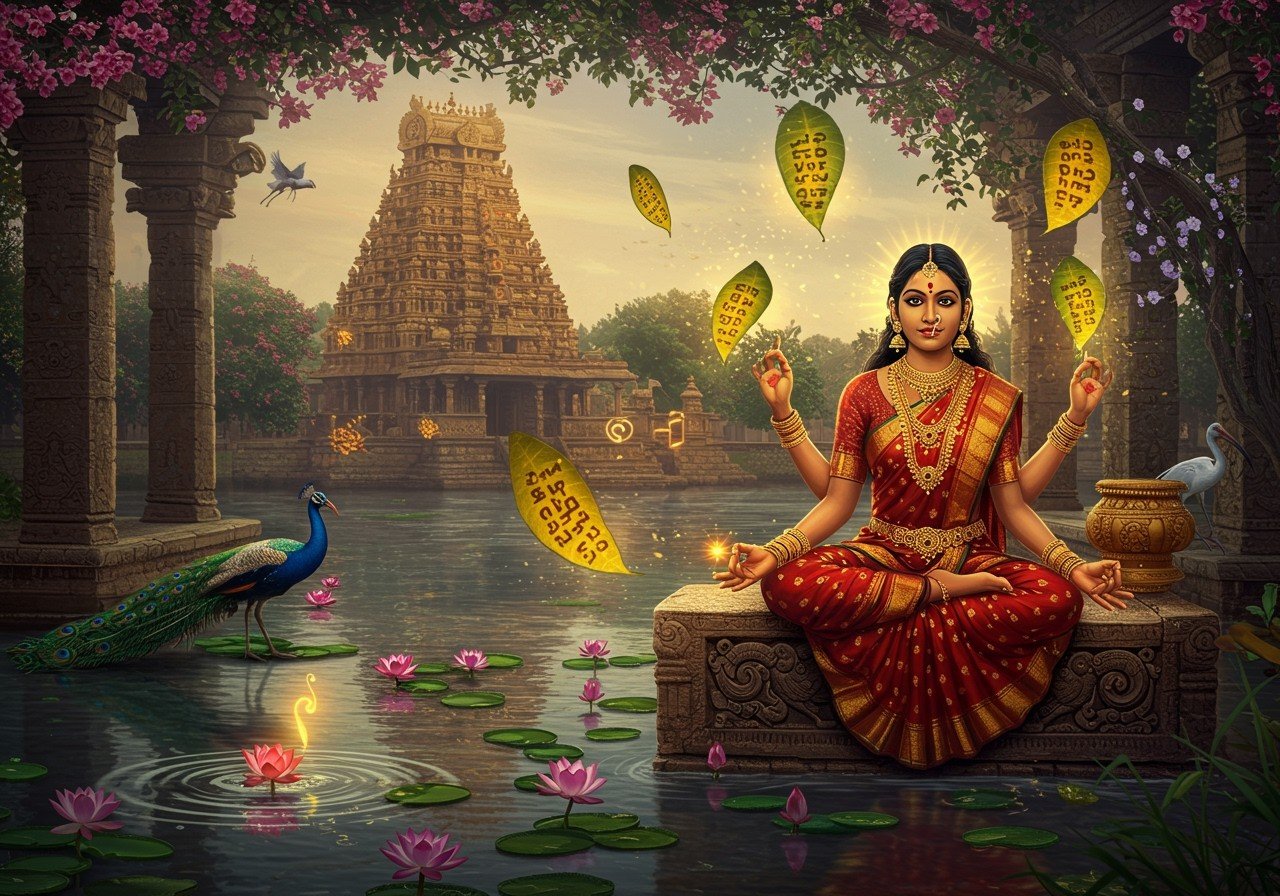
Tamil poetry beautifully intertwines nature and spirituality, creating a rich tapestry of cultural expression. This connection is particularly evident in Sangam literature (c. 300 BCE – 300 CE) and the Bhakti movement (c. 6th Century CE onwards). Let’s explore this fascinating intersection and discover how it continues to resonate with us today.
Sangam Literature: Nature as a Way of Life
Sangam poetry reveals the deep connection between the ancient Tamils and the natural world. They saw nature as a powerful, awe-inspiring force, a source of life and wisdom. This reverence is reflected in the concept of “thinai,” which categorizes landscapes into five distinct types:
- Kurinji: The mountainous regions, shrouded in mist and mystery, home to unique flora and fauna. These landscapes symbolize love and longing in Sangam poetry.
- Mullai: The pastoral regions, where shepherds tend their flocks amidst lush greenery. These serene landscapes evoke a sense of peace and tranquility.
- Marutham: Fertile riverine agricultural regions, the lifeline of ancient Tamil civilization. These landscapes represent prosperity and abundance. They also served as a canvas for portraying life’s cycles, reflecting the rhythms of agriculture.
- Neidhal: The vibrant coastal regions, where fishermen cast their nets and brave the waves. These dynamic landscapes symbolize both the bounty and the dangers of the sea.
- Palai: The arid and desolate regions, a test of human resilience. These harsh landscapes represent separation and hardship.
Each thinai had its own associated deities, cultural practices, and emotional undertones, profoundly influencing the poetry’s themes. Nature wasn’t just a backdrop; it was an integral part of life, a source of inspiration, and a mirror to human emotions.
Sangam poets used natural imagery to express a range of human experiences. Love, in particular, found eloquent expression through the metaphors of nature. The blossoming of a flower, the murmur of a stream, the dance of the rain – all became symbolic of the joys and sorrows of love. Poems also praised kings who prioritized water management, recognizing the vital importance of this precious resource.
Ancient Tamils held a deep reverence for nature, viewing it as sacred. They believed that harming nature would bring dire consequences, reflecting their commitment to living in harmony with the natural world. This reverence is evident in their careful preservation of trees, which they considered the abode of deities. Need items for your own sacred space? Poojn.in offers a wide selection of puja samagri to help create a peaceful and sacred atmosphere in your home.
The Bhakti Movement: Poetry as an Expression of Faith
The Bhakti movement brought a new dimension to Tamil poetry, emphasizing a deeply personal and emotional connection with the divine. Poetry became a powerful medium for expressing devotion and love for God. The Alvars (Vaishnavites) and Nayanmars (Shaivites), poet-saints revered to this day, poured their hearts out in hymns of praise to their chosen deities. Their poetry is a testament to the transformative power of faith and devotion.
Bhakti poetry explored themes of love, surrender, and the fleeting nature of human life. The poets often used the metaphor of lovers to express their devotion to the divine. They emphasized the importance of spiritual pursuits, urging listeners to seek solace and meaning beyond the material world. Explore Mangalam products at Poojn.in to enhance your spiritual practice.
The Bhakti movement also had a profound social impact, breaking down social barriers and making devotion accessible to all, regardless of caste or creed. It fostered a sense of unity and shared spiritual experience.
Key Figures and Concepts
- Thiruvalluvar, the author of the timeless Thirukkural, offered profound insights into ethics, morality, and the importance of living in harmony with nature. He even extolled the virtues of rain, recognizing its life-giving power.
- Ananku, an ancient Tamil concept, embodies the sacred power inherent in nature and human experience. This power inspires both awe and reverence, reminding us of the mysteries that lie beyond our comprehension.
- Murugan, a beloved Tamil deity, is closely associated with mountains and embodies the concept of ananku. He represents courage, strength, and the untamed spirit of nature.
- Andal, the only female Alvar saint, composed exquisite poetry that blended love, devotion, and surrender. Her verses continue to inspire and uplift devotees.
- Subramania Bharathi, a modern Tamil poet, addressed a range of themes, including nature, spirituality, and social issues. His powerful words continue to resonate with contemporary audiences.
The Interplay of Nature and Spirituality
The interplay of nature and spirituality in Tamil poetry reflects a deep understanding of the interconnectedness of all things. Animistic beliefs, which see spirits inhabiting natural elements, were prevalent in ancient Tamil culture. This fostered a profound respect for the natural world, which was seen not just as a backdrop but as sacred in its own right. Enhance your spiritual practice with authentic Guggal from Poojn.in.
Tamil deities were often associated with specific natural elements, further reinforcing the link between the Tamil people and their environment. Murugan with the mountains, Shiva with the forests – these associations highlight the divine presence within nature itself. The goal was to live in harmony with nature, recognizing its power and respecting its boundaries. Create a sacred atmosphere with Senna Patta from Poojn.in.
Poojn.in: Supporting Your Spiritual Journey
At Poojn.in, we understand the deep significance of Tamil culture and spirituality. We offer a wide range of authentic puja items to support your devotional practices. From traditional brass lamps (vilakku) to pure copper vessels for offerings, we have everything you need to create a sacred space in your home. Explore our collection of clay items, puja kits, and other puja samagri to enhance your spiritual journey.
The Timeless Bond: A Legacy of Reverence
Tamil poetry’s exploration of nature and spirituality offers a timeless message of reverence and interconnectedness. It reminds us of the importance of honoring our traditions, cherishing the natural world, and seeking a deeper connection with the divine. This legacy continues to inspire and guide us on our own spiritual journeys, reminding us of the beauty and wisdom that can be found in the world around us.
Discover the rich tapestry of Tamil poetry and deepen your connection to this vibrant cultural heritage. You can further enrich your understanding by reading more about Chhinnamasta Devi and the fascinating blend of nature and spirituality in Rajrappa.


